Black Dahlia/Zodiac Surrealist Serial Killer Uses Famed Modernist Artists Man Ray, Galka Scheyer and Edmund Teske as His Family Photographers
Los Angeles, California
May 22, 2016
Hodel Family by Galka Scheyer taken Nov 7, 1943
(Rear Dr. George Hill Hodel age 36 and Duncan Hill Hodel age 15
Front/Left to Right, Steven, age 2, Kelvin age 1, and Michael age 4)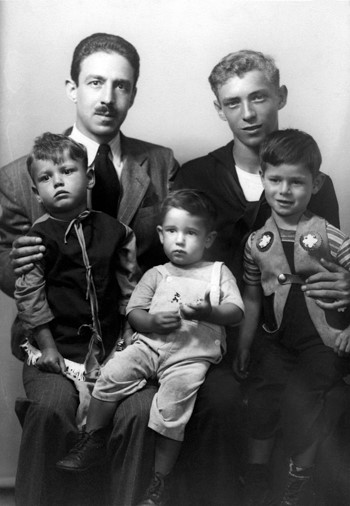
Just three months after committing Los Angeles’ sadistic “White Gardenia Murder” (Victim Ora Murray, July 26, 1943, was strangled and beaten to death with her semi-nude body found carefully posed on a public golf course) Dr. George Hodel is seen (left) posing with his four sons for a photograph taken by renowned LA art collector/photographer and family friend, Galka Scheyer.
Here is a short biographical description from Mark Nelson and Sarah Bayliss Hudson’s Exquisite Corpse website shown in their “A Web of Connections Map: Los Angeles 1935-1950.”
Most famously remembered as the brash agent of the “Blue Four” (Alexei Jawlensky, Lyonel Feininger, Paul Klee, and Wassily Kandinsky), Galka Scheyer was a major force in introducing European modernism to LosAngeles in the 1930s and 1940s. She occasionally acted as an intermediary for Walter Arensberg when he wished to purchase works from Marcel Duchamp. A dispute over prices ruptured their relationship in 1936, but it was mended by the time of her death, in 1945. Arensberg helped ensure that her collection was preserved intact at the Pasadena Art Institute (now the Norton Simon Museum, Pasadena). Scheyer had many business dealings with Earl Stendahl and she knew John Huston. During lean years, Scheyer stayed afloat financially by developing an art education class for children. A misspelled entry in Dorothy and George Hodel’s calendar notes: “Gelka Scheyer for children’s pictures.” Scheyer was also friends with Edward G. Robinson.
Handwritten Calendar entry made by Dorothy Huston Hodel for “November 7, 1943 noting appointment with Galka Scheyer for “Children’s pictures.”
Here we see that George Hodel has placed the 1943 Galka Scheyer photograph in his private photo album, which also included some of the Man Ray family photos as well as the photograph of Elizabeth “Black Dahlia” Short.
Galka Scheyer 1931
Galka Scheyer seated at left in her friend, architect, Rudolph Schindler’s Kings Road House. In 1933 Galka commissioned Richard Neutra to build her a home in the Hollywood Hills north of Sunset Blvd. She named the street Blue Heights Drive.
Richard Neutra built home for Galka Scheyer located at 1880 Blue Heights Dr., Los Angeles. Ms. Scheyer died in Los Angeles in 1945, just two years after taking the Hodel family photograph.
Rudolph Schindler was also friends with my father, Dr. George Hill Hodel and below are two sketches Schindler designed for some furniture my father had commissioned, circa 1940. (Courtesy of Schindler Archive, U.C. Santa Barbara.)
Hodel Family by Edmund Teske circa 1948
This photograph was taken in the inner courtyard of the Sowden/Hodel Franklin House circa 1947.
Edmund Teske whose artworks currently hang in international art museums throughout the world including Los Angeles’ Getty Museum ,was a close friend of Dr. George Hill Hodel and a regular visitor to the Hodel residence.
Teske took this second photograph from inside the living room of residence showing the three Hodel brothers seated in the courtyard.
From the Edmund Teske Archives:
…
Teske was drawn west by the allure of the motion picture industry and a desire to meet Greta Garbo. He worked in the stills department of Paramount Studios. He lived in the Frank Lloyd Wright residence of Aline Barnsdall on Olive Hill where he met Man Ray. He photographed actors and other notable folk. To name a few: Joel McCrea, Geraldine Page, Kenneth Anger, John Saxon, Ansel Adams, Jim Whitney, Ramblin Jack Elliott, Will Geer, Anais Nin, Jane Lawrence, and others.
Edmund Teske in scene clip from MGM’s Lust for Life (1956)
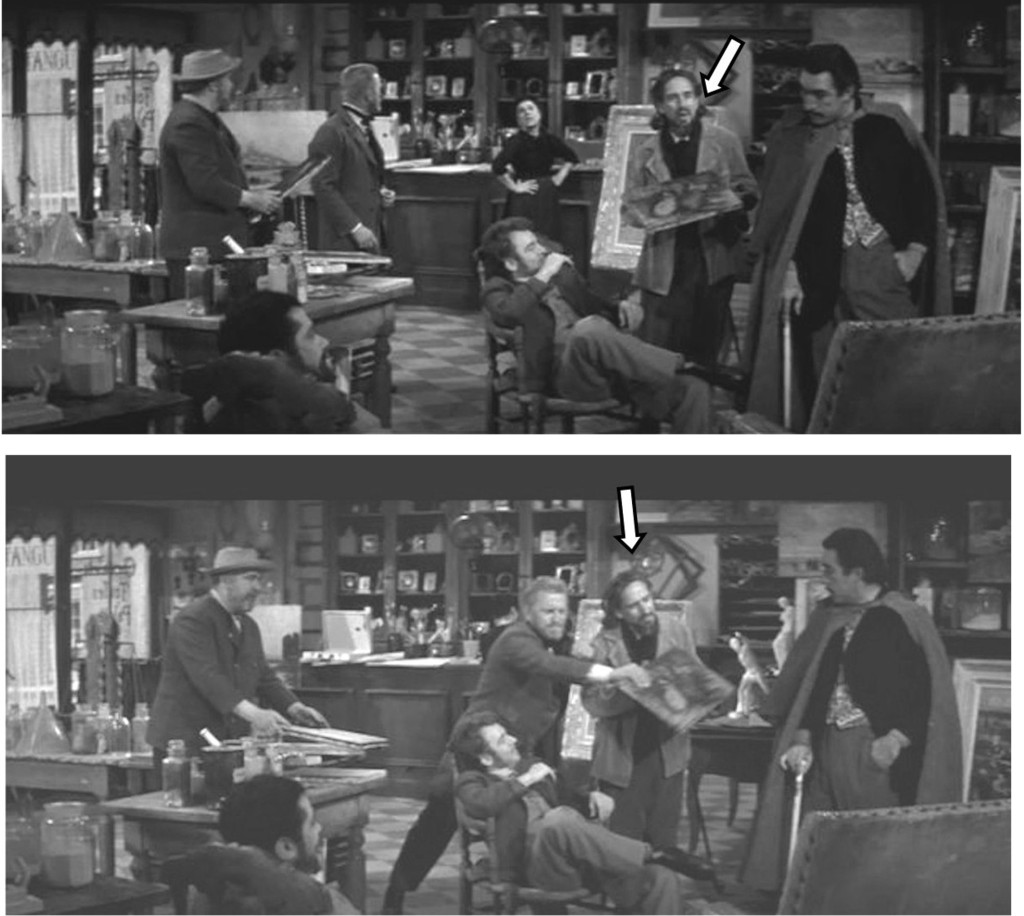
In this scene with Kirk Douglas (Vincent Van Gogh) and Anthony Quinn (Paul Gauguin) Edmund Teske, (marked with the white arrow) a fellow artist, is questioning Van Gogh’s skill as an artist. Teske was forty-five years old when the film was released. Quinn won an Oscar for Best Supporting Actor.
Incredibly, Edmund Teske, a close friend and kindred spirit to Dr. George Hodel, and Man Ray would become a prime witness in my investigation by way of a conversation he had with an Altadena architect, Steven Lamb. Lamb was an admirer of Lloyd Wright, (son of Frank) who he knew had designed and built the Sowden House, in 1926. The Lamb/Teske conversation took place in front of the Sowden home in 1978 while Lamb was taking photographs of the front exterior of the structure. Teske approached Lamb and asked, “Do you like the house?” Lamb began to respond, “Why, yes sir. It’s a very important early Lloyd Wright…” Teske interrupted him:
“It’s an evil place! Artists, philosophers, accountants and politicians we all played and paid there. Women were tortured for sport there. Murders happened there. It’s an EVIL place.”
Teske then turned and walked away. The entire meeting and conversation as described and written by Steve Lamb, are detailed in Chapter 10 of my follow-up book, Black Dahlia Avenger II (Thoughtprint Press 2014).
How bizarre that Edmund Teske, a family friend, to my father, who took one of my favorite photographs of my brothers and me in 1948, would as if by pure happenstance, some thirty years later, play a critical role in confirming that George Hodel was a sadistic killer and that tortures and murders of multiple women occurred inside the Sowden/Franklin home.
The below Hodel family photographs were taken by Surrealist/Dadaist, Man Ray in 1944, 1945 and 1946. Man Ray, became a close friend to both George and Dorothy (“Dorero”) Hodel during the artist’s “Hollywood Years” (1940-1951). His artwork and photographs were used and included as “inspirations” in my father’s serial crimes as part of his crime-signature/M.O. of, ‘Murder as a Fine Art.” The “Man Ray Nexus” becomes critical to understanding George Hodel’s insane drive to create his own “Surreal Masterpiece” by slaying, cutting and publicly posing his victims as body sculptures, and taunting, “catch me if you can” clues to his crimes.
In 1948, Man Ray and gallerist/artist William Copley published an art book, Alphabet for Adults (Copley Gallery, Los Angeles 1948) in which they included drawings of the interior of the Sowden/Hodel residence, a man and a woman (likely George and Dorero) and linked them to the letter Q for Quarrel. See Most Evil II, Chapter 9 for full details of “word games” and connections to George Hodel.
At first glance, the fact that three of Los Angeles’ most famous modern artists from the 1940s, Galka Scheyer, Edmund Teske and Man Ray would each play a role as Hodel “family photographer” appears quite astounding.
However, after discovering George Hodel’s love for the Surrealist Movement, along with his close personal ties to each of these artists in the 1940s, provides us with a much clearer understanding.
The three Hodel photographs all predate the 1947 Black Dahlia Murder. We know that both Man Ray and Edmund Teske knew their friend, George Hodel, had killed the Dahlia, shortly after the murder, as established in my investigation. Galka Scheyer, as part of dad’s “inner circle” could not have been aware of the Dahlia murder, as she died two years earlier, in 1945, just two years after taking the “Hodel family photo.” George Hodel’s incest/child molestation crimes committed upon his 14-year-old, daughter, Tamar, occurred in the summer of 1949. (Man Ray also took nude “family photographs” of Tamar at age 12, but they were destroyed and never became a part of the later criminal prosecution.)
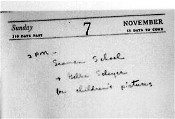
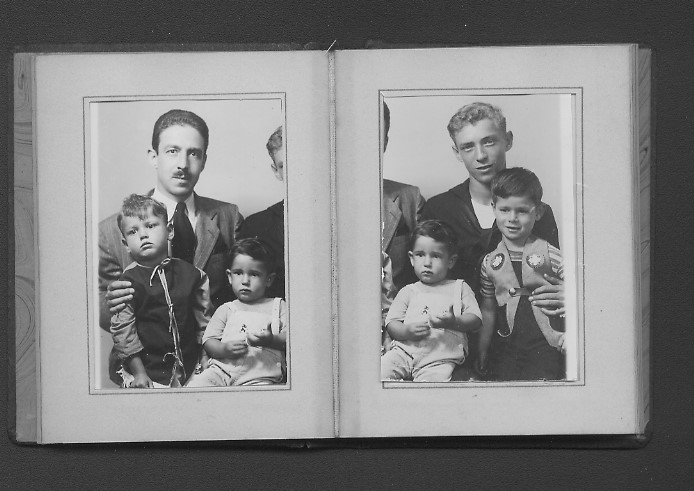
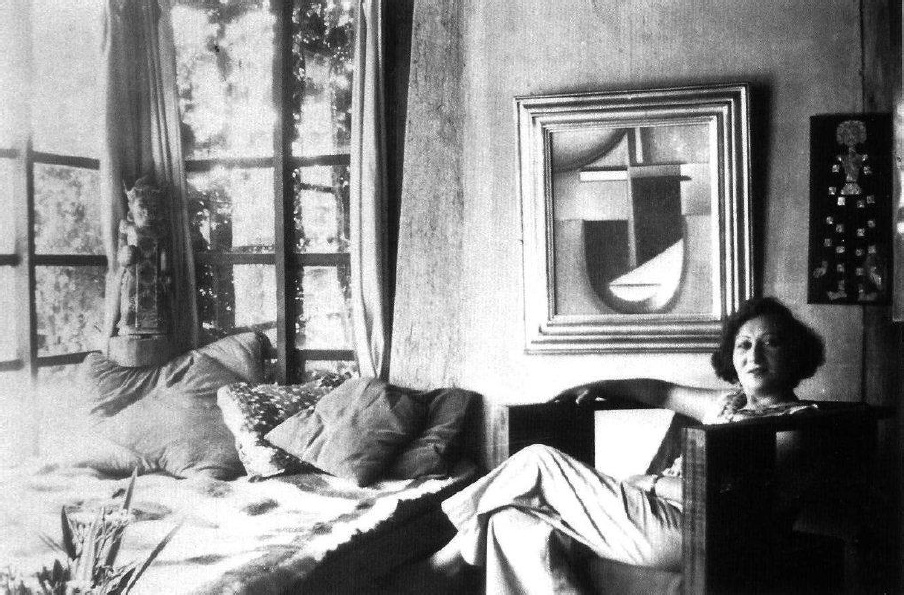
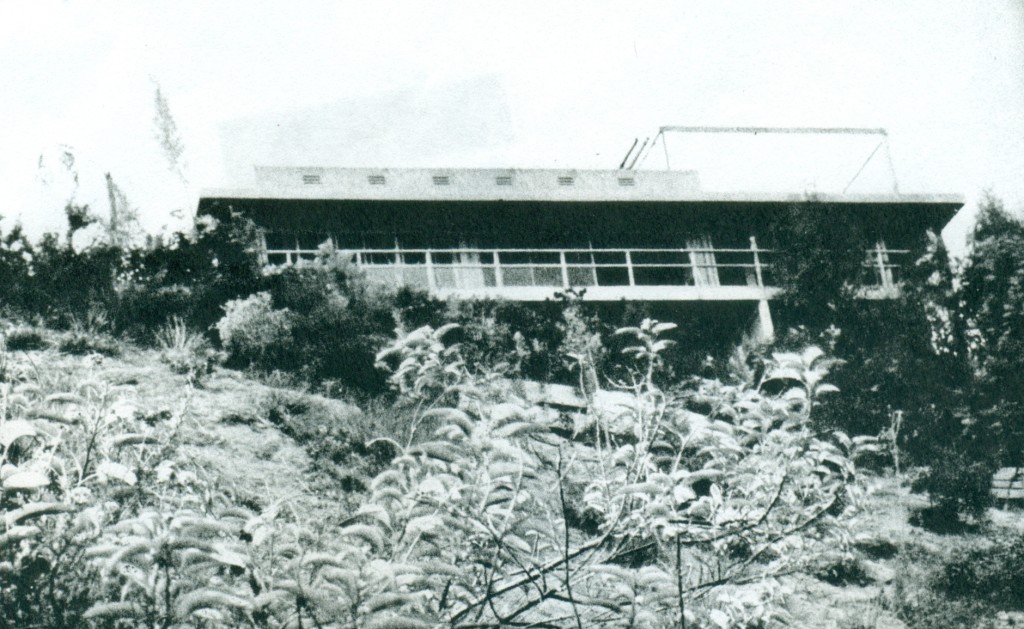
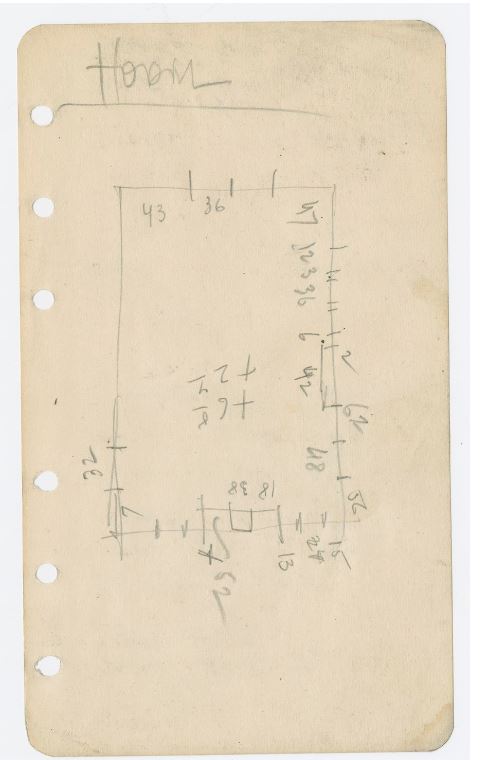
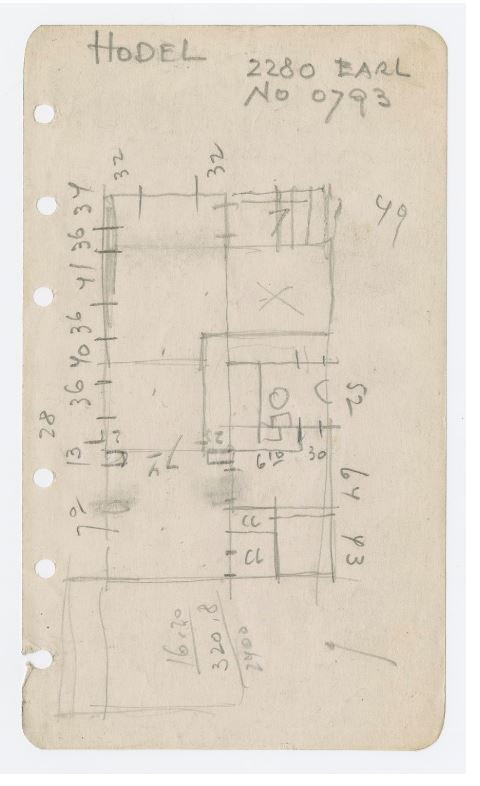
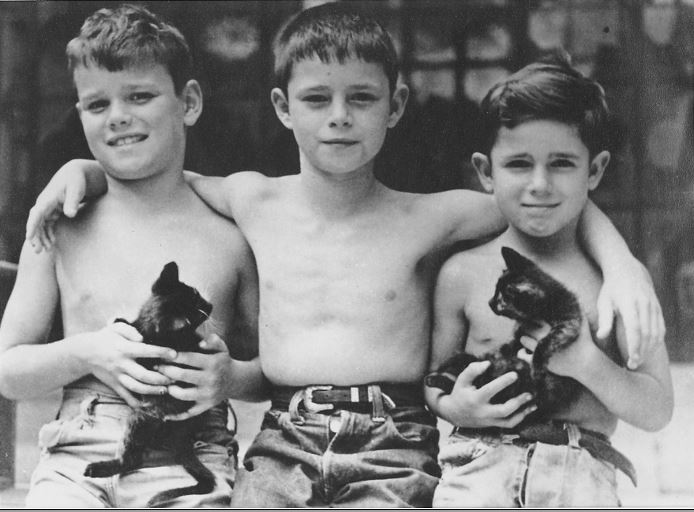
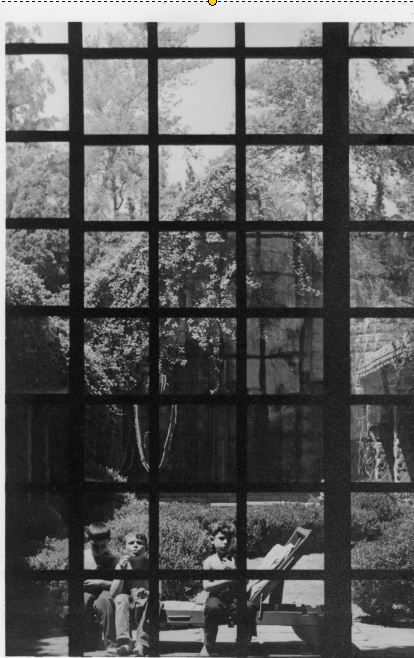
Steve: GHH’s connection to R. M. Schindler could be another link to Sadakichi Hartmann and, potentially, to Wistaria Hartmann. Sadakichi used to entertain Schindler’s bohemian soirees at the King’s Road house dressed up as Edgar Allan Poe, with Wistaria collecting ticket money at the door (“Neutra vs. Schindler,” Vanity Fair, 1999). This seems to have been in the 1925-1930 time frame. Possibly, GHH’s later practice of renting out rooms at the Sowden House to artists and performers was inspired by Schindler (see Wikipedia Schindler_House article). There is a question of timing here. Young George certainly had contact with SH in the twenties, but he leaves Los Angeles for med school and internships for about a decade starting in 1928. I believe Wistaria would have been about 16 at the time GHH moved up north, five years his junior. SH’s declining fortunes and association with the Bundy Drive Boys seems to coincide with the period GHH was away from LA. GHH returned around the time Wistaria married and Hartmann built his shack to live his remaining years close to her in Banning, Riverside. Wistaria was clearly very active in promoting her father’s legacy after his death in 1944: she sued Gene Fowler unsuccessfully over “Minutes of the Last Meeting” in the mid fifties, facilitated an exhibit at UCLA in conjunction with UC Riverside in ’59, and supported the major retrospective at UCR in ’70. I don’t see any correspondence between Hartmann and GHH listed in the UCR Special Collection, but Ben Berlin is in there quite a bit. All in all, the Hartmann/Riverside angle looks like an interesting lead, though I’ve not yet seen anything to demonstrate an ongoing connection after the newspaper write-up and Fantasia publication in the mid-twenties. -LW
Steve:
It seems likely that Zodiac had the same the deep fascination with the work of Edgar Allan Poe shared by George Hodel and his Fantasia contributors Sadakichi Hartmann (who would dress up as Poe and do party pieces as same) and Ben Berlin (who considered himself the reincarnation of Edgar Allan). The cryptographic challenges and the Mt. Diablo/Devil’s Seat allusion suggest that. And what is Zodiac’s Bomb-Hoax but Poe’s Balloon-Hoax redux? From Wikipedia, here’s the New York Sun’s retraction of the Balloon-Hoax:
The BALLOON – The mails from the South last Saturday night not having brought a confirmation of the arrival of the Balloon from England, the particulars of which from our correspondent we detailed in our Extra, we are inclined to believe that the intelligence is erroneous. The description of the Balloon and the voyage was written with a minuteness and scientific ability calculated to obtain credit everywhere, and was read with great pleasure and satisfaction. We by no means think such a project impossible.
One commentary on the Great Balloon-Hoax opines:
With the ending of this tale, one may recall again Poe’s initial smugness at how easily everyone had believed the events of this story to be facts. Underpinning these closing lines, “What magnificent events may ensue…” one can sense the voice of sarcasm and mockery that occasionally characterizes Poe’s writing. Indeed, it was the New York Sun that had wanted to outdo its competing newspapers with this “breaking news,” but in the end it was Edgar Allan Poe who had beaten them all with his fictitious and infamous tale of “The Balloon-Hoax.”
Quite so.
-LW
LW: Was not familiar with Poe’s Balloon Hoax, but yes, same egotistical need to pull one off on the public as the “buried bomb” Zodiac hoax.
Very apro POE. skh
Steve,
This is all making too much sense. As I previously noted, using solely the criteria of male caucasian with LA and Bay area connections, size 10 shoe and size 7 glove, high education level and amateur poet, the pool of Zodiac candidates can only be of the order of 1000 people. What are the chances that, out of a thousand people selected on those individually innocuous criteria, one of them would previously have been a top suspect in a bizarre, unsolved, art-project-style murder in which the killer acted as his own press agent? And then we find the Poe, de Sade, Tim Holt and Treasure Island linkages, and more besides. What is it going to take to bring this to the next level?
Regards,
-LW
LW: The next level was/is Most Evil II with the 1952 Sniper film as his template, and the updated composites showing Zodiac to be 45years + and the Herb Caen/Kenneth Rexroth/George Hodel connections, and DCI Sue Wilshire’s discovery of the Man Ray/Hodel/Sowden House “Alphabet for Adults” book published in 1948. Then the “icing on the cake” with Paris Highschool teacher, Yves Person’s cracking of the Zodiac Cipher revealing GHH signed his real name, HODEL to the 1970 Halloween/”You Ache To Know My Name” card which connects to surrealist Brian O’Doherty. Game Over. skh
Galka Scheyer died in 1945, before the infamous murder of Elizabeth the Black Dahlia, so how could Galka Scheyer have known about the crime? Unless you’re referring to another murder?
John J: You are correct, she died in Dec. 1945, so no way she could have been aware of the Dahlia murder two years later in Jan. 1947. I have no reason to believe she could have been aware of the 1943 Ora Murray murder, which occurred just a few months before she took our family photo in Nov. 1943. In my blog I indicated she may have heard of the Dahlia murder since both Man Ray and Edmund Teske her friends/associates knew of it. But, will here correct and remove that as a possibility. Thanks, Steve.
My mistake, sorry Mr. Hodel. I read your first book. Very interesting .
I’ve always wondered if there was an artistic connection to The Black Dahlia murder due to the bizarre nature of the murder and “posing” of the body. To be more specific, I’ve always been suspicious of Kenneth Anger. Lo and behold, I find a connection here in this post.
Anger now qualifies as ancient and can’t live much longer. Who knows what that freak has hidden away in some secret vault that may or may not ever see the ligbt of day.
Then again, your father was probably much too ingenious to allow Anger or anyone else to make snuff films of his activities.. On the other hand, arrogance can make the smartest people do the stupidest things. He seems to have been a trusted member of an intimate circle of cultists.
Patrick K:
Well, if I have learned one thing from my now twenty-years of investigation, five books and twenty-five victims and counting, it is that I would not rule anything OUT. Though Kenneth Anger was a bit young for the GHH crowd still his interests in Crowley and the Church of Thelema in the mid-forties may indicate he knew or knew of Baron Harringa, one of GHH’s accomplice in at least one likely murder and possibly many others. Also, looks like he was at Hollywood HS about the same years as Tamar, so ????